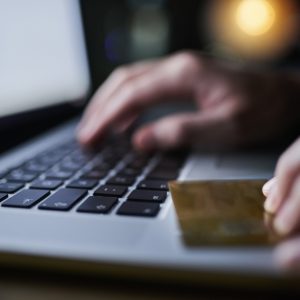
Public demand for blockchain use cases has exploded in the past year, especially around the adoption of non-fungible tokens (NFTs), cryptocurrency and decentralised finance (DeFi) through enterprise applications. Indeed, Gartner predicts that by 2024, at least 20% of large enterprises will use digital currencies for payment, stored value, or collateral.
With blue chip payment processors such as Visa, Mastercard, PayPal, and Square leading the way and supporting forms of cryptocurrency transactions, enterprises have increasingly taken notice. Many are embracing these new applications as they seek to extract value from new business models and the processes which they enable.
There are, however, risks attributed to the integration of enterprise applications needed for digital currencies – ranging from volatility to a lack of legal protection and regulatory clarity – especially for those more inexperienced organisations. And with enterprises, particularly application leaders, under pressure to embark on the blockchain journey in 2022, businesses must agree on use cases and follow several key processes to ensure success.

Stored value, payment, and leverage for DeFi investments are the three most likely use cases for blockchain in 2022. (Photo by efetova / iStock)
Use cases for blockchain in 2022
First, for any organisational adoption of blockchain, the initial step is establishing use cases, often boiling down to three potential applications: stored value, payment, and leverage for high-yield investments available in DeFi. Leaders should next select solutions corresponding to these applications.
For stored value, leaders choose an institutional digital asset custody and/or retail wallet solution to ensure processes for regulatory compliance measures are incorporated.
When selecting payments, use a payment software provider or processor that provides the types of payment workflow and system interfaces required for the new functionality, to meet evolving customer needs.
Finally, for leverage, leaders should select a service provider that bridges centralised finance controls and processes with decentralised financial protocols and applications.
Regulation and analytics
Through the process, organisations fraying into blockchain must remain vigilant when integrating cryptocurrency applications. Cybercrimes involving cryptocurrencies are on the rise, totalling approximately $1.9bn across the world in 2020, with ransomware payments in the first half of 2021 exceeding the 2020 total, according to CipherTrace’s Cryptocurrency Crime and Anti-Money Laundering Report. According to Gartner, this trend is only set to continue as new ransomware models become the primary concern for company executives.
This means learning about the transparency afforded by trackable and immutable blockchain transactions, especially when compared to transactions on other payment and money movement networks that lack such visibility. Second to this, organisations should use know your customer (KYC) and identity proofing services when onboarding users to their cryptocurrency platforms, so that their identities can be mapped to their blockchain transactions and remain compliant with existing and upcoming regulations.
Businesses must also consider on and off-chain analytics and intelligence, either directly or via integration with digital asset custody solutions or wallets. This will ensure they comply with travel rules and other regulations while preventing and detecting criminal activity that infiltrates their applications.
To ensure coordination across the business, application leaders should establish a governance and legal process that involves the CEO, the board, and key operations executives, before preparing a technical and financial response for ransomware attacks. Leaders must also look to monitor government and industry-body announcements on changes to regulations to update their digital currency applications accordingly.
Unlock the power of NFTs
When embarking on blockchain journeys, the power of NFTs must also be considered, to both unlock new opportunities for brand gamification and increase brand value through community engagement.
NFTs have increasingly become an opportunity for businesses to leverage trending hypertokenisation and grow business models, with the market having surged to new highs with $2.5bn in sales so far this year, up from just $13.7m in 1H20, according to marketplace data.
To put this in practice, leaders must determine how they can exploit NFTs as an abstraction of their company’s past products, patents, intellectual property and even processes. This might involve partnering with current NFT leaders and ‘packagers’ to help brainstorm potential enterprise artefacts and abstractions that can be virtualised and tokenised.
Opportunity within risk
While risks remain prevalent in the integration of blockchain and associated technologies such as cryptocurrency the opportunity is too big to miss. Moreover, these risks are expected to reduce with Gartner research suggesting a safe public blockchain in the next three years, as improved advanced analytics, combined with global regulatory pressures, thwart hackers, and fraudsters from attacking organisations.
Ultimately, application leaders must consider their use cases and packaged services, if they are to successfully integrate the technology and enjoy the benefits harnessed by many already.






